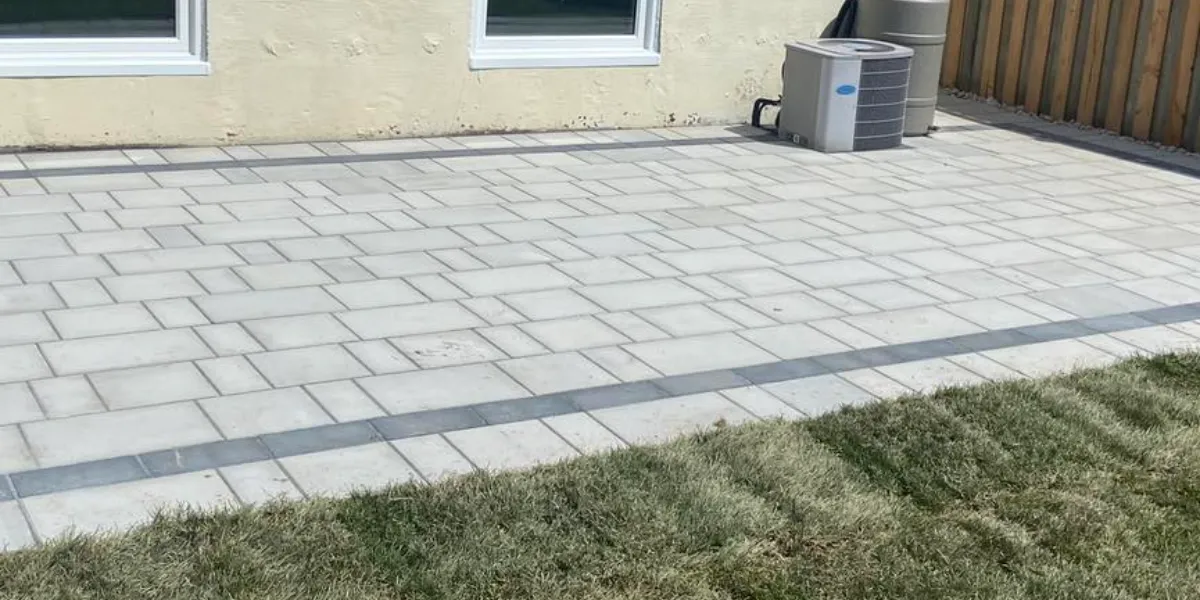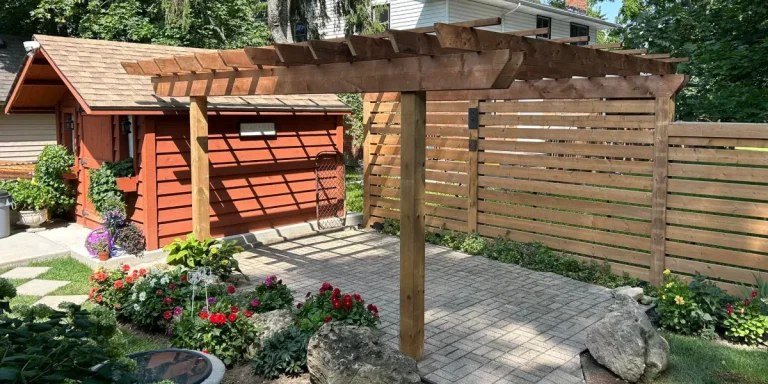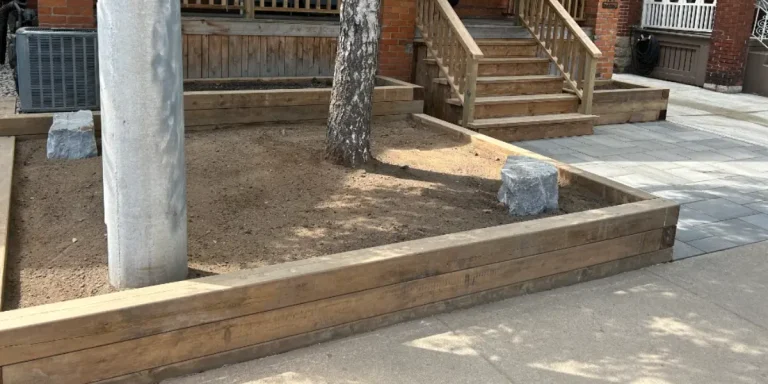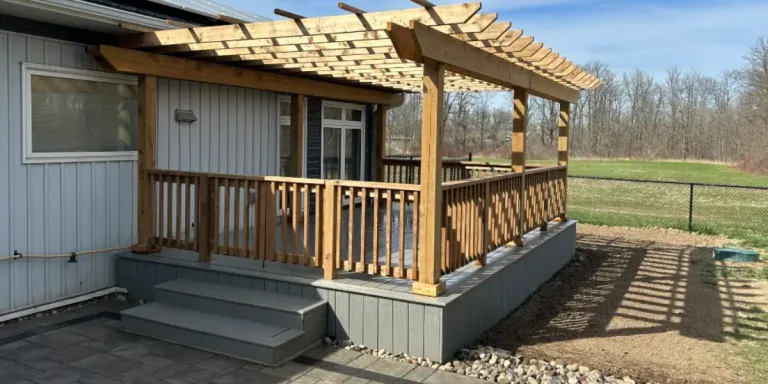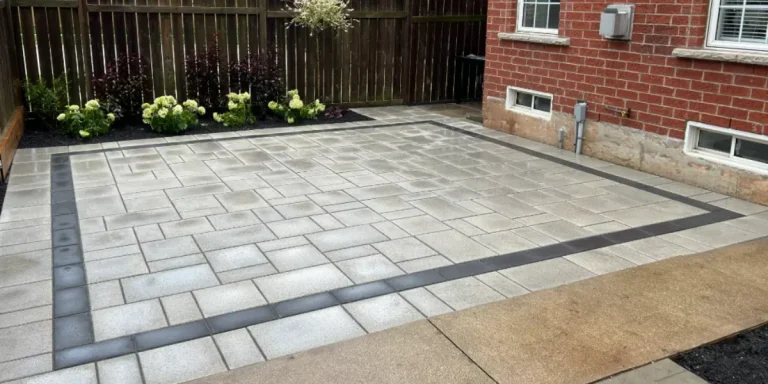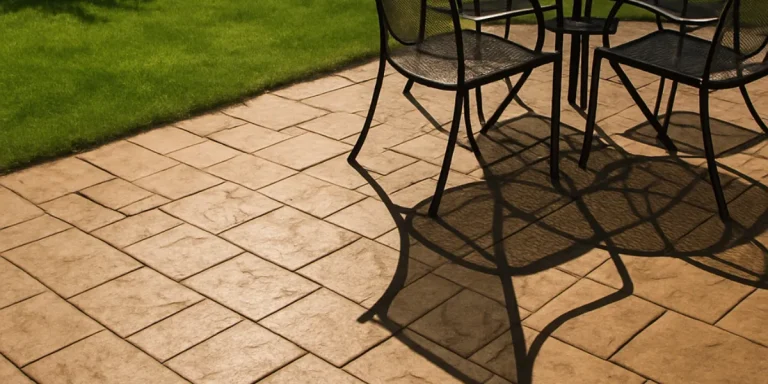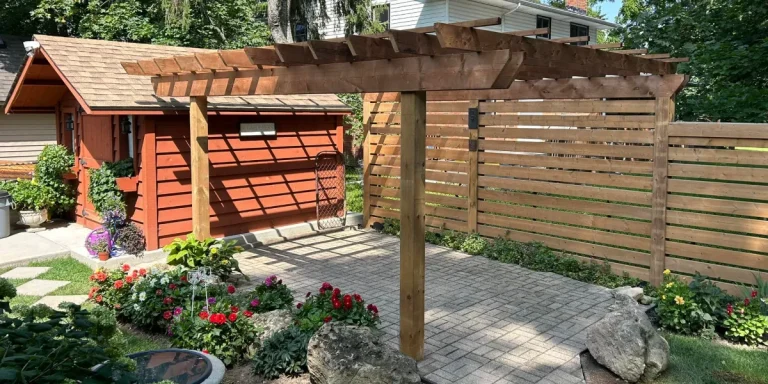Winter-Proofing Your Paver Patio in Southern Ontario
Paver patios are built to last—but winter in Southern Ontario can be tough on even the highest-quality materials. Between freeze-thaw cycles, snow accumulation, and ice melt products, your patio may be exposed to seasonal stress that could impact its appearance and structural integrity over time.
At Square Leaf Landscaping & Design, we help homeowners in Hamilton and surrounding areas protect their outdoor investments year-round. In this guide, we’ll walk you through what winter does to your pavers, how to prepare your patio for cold weather, and why proper maintenance matters for long-term durability.
How winter affects paver patios
While pavers are built to withstand the elements, Ontario’s winters can be particularly punishing. Cold temperatures, repeated freeze-thaw cycles, heavy snow, and de-icing products can all put stress on your patio if it hasn’t been properly prepared or maintained.
Understanding how winter weather impacts paver patios will help you take preventive steps—and protect your investment for the long term.
The freeze-thaw cycle
One of the most significant threats to paver patios in Southern Ontario is the freeze-thaw cycle. This occurs when moisture seeps into the joints or the base layers beneath the patio surface, freezes as temperatures drop, and then expands. As temperatures rise, the ice melts, only to refreeze again later. This repeated expansion and contraction places stress on both the pavers and their foundation.
What can happen:
-
- Joint sand displacement – As ice expands between the pavers, it pushes out the sand that stabilizes them, weakening the overall structure.
- Heaving or shifting pavers – Uneven freezing beneath the base layer can lift some pavers while others stay in place, resulting in an uneven surface.
- Cracking in concrete pavers – If drainage is poor and water becomes trapped beneath the surface, expanding ice can crack or chip concrete pavers from below.
These issues tend to be most severe on patios with compacted snow or poor drainage—especially in areas like Ancaster or Dundas, where winter conditions can fluctuate rapidly.
Snow and ice accumulation
Allowing snow or ice to sit on your patio for extended periods not only traps moisture but can wear down the surface over time. This is particularly problematic for older pavers, or those that haven’t been sealed.
Key concerns include:
-
- Moisture retention – Prolonged exposure to melting snow can saturate paver joints and the bedding layer, increasing the risk of frost heave.
- Surface wear – Abrasive ice or repeated scraping with metal tools can scratch or chip the paver finish.
- Salt damage – Standard rock salt and many commercial ice melters can break down concrete surfaces, stain natural stone, and damage nearby grass or plants.
To prevent this, it’s important to shovel regularly using safe techniques and choose winter-safe de-icing products—especially for patios in Oakville, Grimsby, or Waterdown, where larger snowfalls are common.
Water drainage issues
Water that doesn’t drain properly is one of the leading causes of winter damage to paver patios. Whether due to poor grading, clogged drains, or blocked joint lines, standing water can seep under the pavers and freeze—putting pressure on the base and causing structural movement.
Consequences of poor drainage:
-
- Frost heave – When water freezes beneath the pavers, it expands and lifts the surface, causing unevenness and long-term damage.
- Base layer shifting – Repeated freezing and thawing can weaken the compacted base material, leading to settling or sagging in spring.
- Increased maintenance needs – Ongoing moisture problems often result in the need for joint re-sanding, leveling, or even partial reconstruction.
At Square Leaf Landscaping, we take steps during installation—such as proper grading, compacted base preparation, and edge restraint installation—to ensure long-term performance through Hamilton’s harsh winters. And for existing patios, we offer drainage assessments and maintenance solutions to help homeowners prevent these common issues.
How to winter-proof your paver patio
While paver patios are designed to endure the elements, a little seasonal preparation can make a big difference—especially with the unpredictable winters in Southern Ontario. By taking proactive steps in the fall, you can prevent costly repairs and keep your patio looking and performing its best year after year.
Here’s how to effectively winterize your paver patio:
1. Clean and inspect the patio in the fall
Before the cold sets in, a thorough cleaning and inspection helps remove anything that could trap moisture or cause damage during freeze-thaw cycles.
Key tasks include:
-
-
- Remove leaves, twigs, and debris – Organic material can decompose and stain pavers or block drainage.
- Scrub off moss, algae, or mildew – These can hold moisture against the surface and make pavers slippery.
- Check for loose or uneven pavers – Any instability should be corrected before winter to prevent shifting from frost heave.
- Inspect edges and drainage areas – Make sure water can flow away from the patio and not pool in low spots.
-
At Square Leaf Landscaping, we offer seasonal property cleanups and pre-winter patio inspections to identify and fix potential issues before they turn into problems.
2. Re-seal your pavers (if applicable)
Not every patio needs to be sealed, but for those that do, applying a high-quality sealer provides an added layer of protection from winter moisture and de-icing products.
What to know about sealing:
-
-
- Choose the right product – Use a breathable sealer designed for your specific paver material (concrete, natural stone, etc.).
- Time it right – Seal in early fall when temperatures are still warm and dry enough to allow proper curing.
- Don’t over-seal – Too much sealer can trap moisture and cause cloudy spots or flaking.
-
Our team provides professional sealing services using trusted products, ensuring your patio is protected without altering the natural beauty of the pavers.
3. Replenish joint sand or polymeric sand
The sand between your pavers plays a crucial role in stabilizing the surface, preventing weeds, and supporting proper drainage. After a few seasons—or one tough winter—it often needs to be topped up.
How to refresh your joints:
-
-
- Sweep in new sand – Choose regular joint sand or polymeric sand depending on your patio type.
- Compact and fill properly – Make sure sand reaches the full depth of the joint gaps.
- Water and set – For polymeric sand, a light mist of water activates the bonding agents and locks the sand in place.
-
Re-sanding is one of the most affordable ways to extend the life of your patio. At Square Leaf Landscaping, we offer joint sand replacement as part of our patio maintenance services.
4. Shovel carefully and avoid metal blades
Snow removal is necessary—but doing it the wrong way can damage your pavers. Protect your patio surface by using the right tools and techniques throughout the season.
Best practices include:
-
-
- Use a plastic snow shovel – It’s gentler on the paver surface and won’t scratch or chip.
- Avoid metal edges or ice choppers – These can loosen pavers or damage joint sand.
- Adjust snow blower settings – Keep the blade slightly above the surface to prevent gouging the pavers.
- Clear snow promptly – Regular removal prevents compaction, reduces ice buildup, and limits moisture absorption.
-
Whenever possible, push or sweep snow off your patio rather than scraping aggressively.
5. Use salt alternatives for de-icing
Standard rock salt (sodium chloride) can be extremely harsh on concrete pavers and surrounding landscaping. If you need traction or de-icing, safer alternatives are available.
Recommended de-icers include:
-
-
- Calcium magnesium acetate (CMA) – One of the most environmentally friendly options.
- Potassium chloride or magnesium chloride – Less corrosive than rock salt and safer for pets and plants.
- Sand or gravel – Provides traction without chemicals, ideal for patios with natural stone or sensitive plantings.
-
Our team is happy to recommend winter-safe de-icing products based on your patio material, location, and design features.
Example: A winter maintenance plan in Burlington
One of our clients in Burlington had a beautiful interlocking paver patio and retaining wall system installed in their backyard. After noticing joint sand loss and minor shifting the following spring, we created a winter maintenance plan that included:
- Seasonal inspections and sand replacement
- Strategic drainage improvements around the patio edge
- Guidance on snow removal and salt-free de-icers
Since then, their patio has held up through multiple Ontario winters with no further issues—and continues to look just as good as the day it was installed.
Serving Hamilton and surrounding communities
Square Leaf Landscaping & Design proudly provides patio construction, repair, and seasonal maintenance services in:
-
- Hamilton
- Ancaster
- Burlington
- Dundas
- Waterdown
- Aldershot
- Grimsby
- Binbrook
- Oakville
- Stoney Creek
If you're in one of these areas, we’re ready to help you winter-proof your paver patio and protect your entire outdoor investment.
Ready to protect your patio this winter?
Don’t let the freeze-thaw cycle damage your outdoor space.
At Square Leaf Landscaping & Design, we offer expert patio maintenance, cleaning, joint sand replacement, sealing, and drainage solutions to keep your paver patio in top condition—through winter and beyond.
Contact us today to schedule a consultation or request a free estimate. We serve homeowners across Hamilton and the surrounding areas with complete landscaping and hardscaping solutions built for Southern Ontario’s climate.

